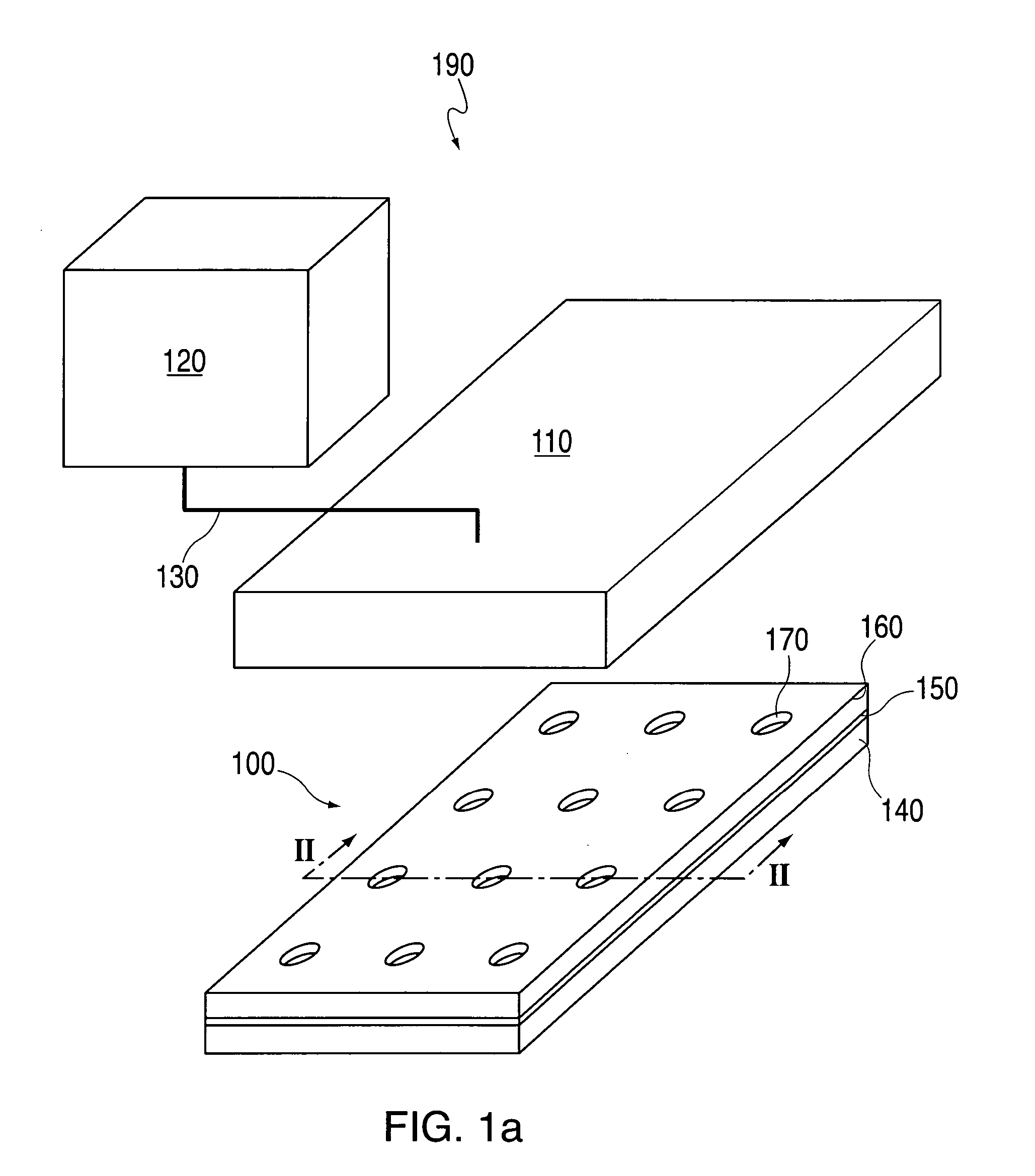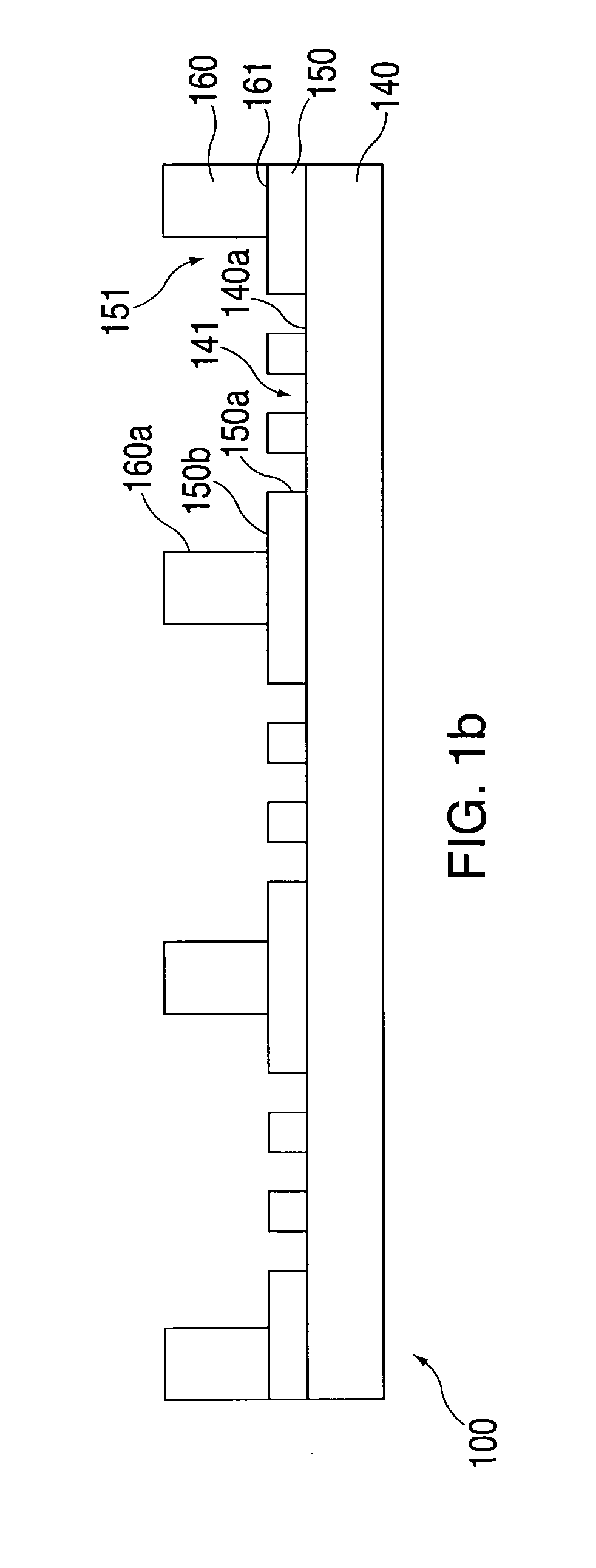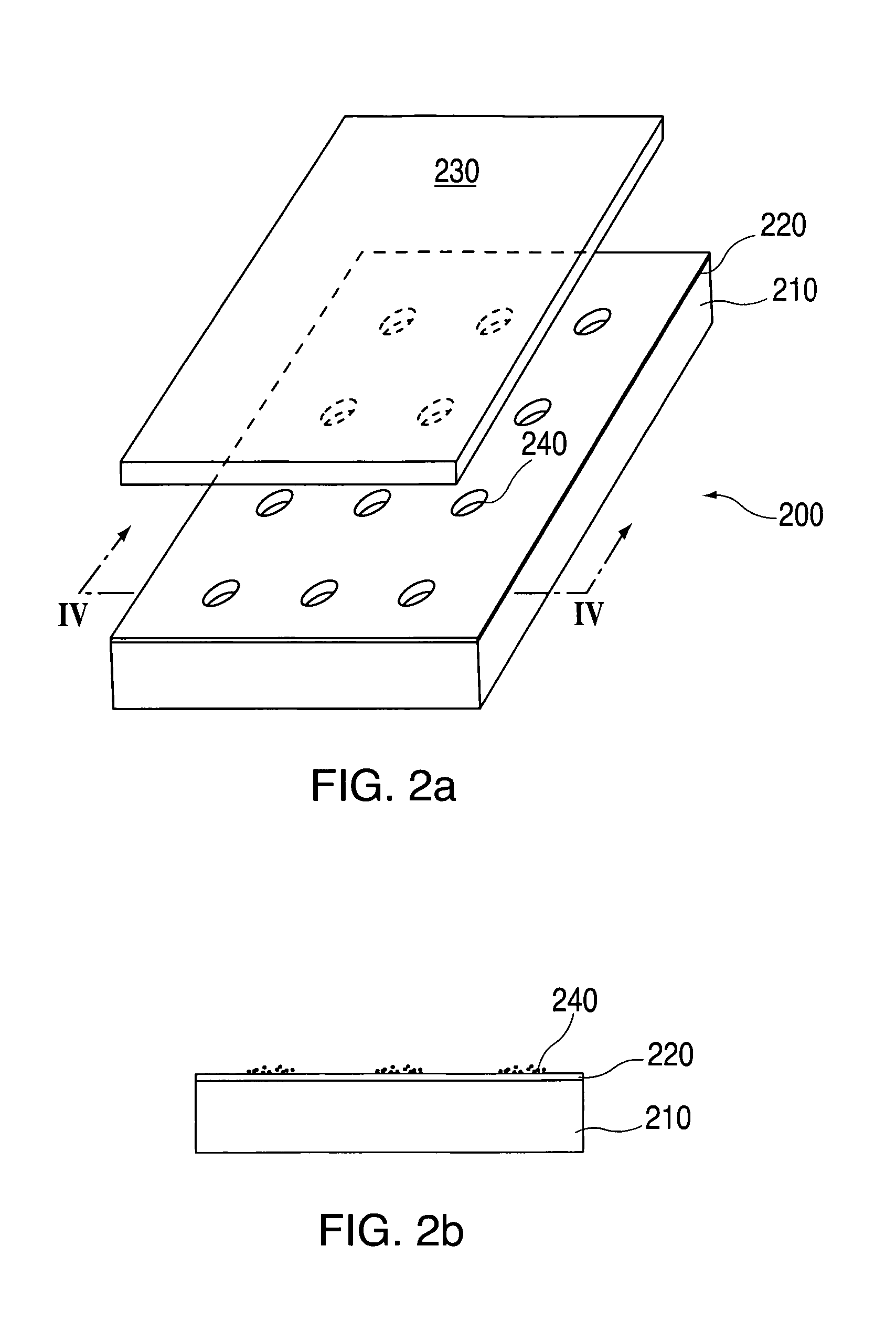System for monitoring cell motility in real-time
a real-time, cell-based technology, applied in the field of real-time cell-based motility monitoring systems, can solve the problems of time-consuming, labor-intensive, and expensive process of transwell-based assays, and achieve the effects of reducing the number of cells, reducing the number of experiments, and improving the quality of cells
- Summary
- Abstract
- Description
- Claims
- Application Information
AI Technical Summary
Benefits of technology
Problems solved by technology
Method used
Image
Examples
example 1
Procedure for Cell Migration Assay Plate Fabrication
[0271] A topographically patterned master having a plurality of posts is prepared from a photolithographic mask. These posts are elevated approximately 100 μm above the background. In one embodiment, the pattern is made up of 24 micro-regions, each containing a circular array of 200 μm posts spaced on a 500 μm center. Alternately, instead of having discrete regions of posts, the entire surface of the master may contain posts. In one preferred embodiment, the master is made of photoresist patterned on a 150 mm silicon wafer. To prepare this master, SU-850n photoresist spun at 1300 rpm was used and processed according to the supplier's specifications.
[0272] A two-component poly(dimethylsiloxane) (PDMS) prepolymer (Gelest Optical Encapsulant 41) was mixed and degassed under vacuum before it is spun onto the master. This spin coating was done at a speed high enough to produce a polymeric membrane (i.e., the thickness of the resulting...
example 2
Patterning of Cells on a Support
[0277] In this example, macro-wells of a stencil which is engaged with a the first layer 150 and support are filled with PBS and a vacuum is applied for two minutes to remove air bubbles. The support may then be treated with fibronectin (50 mg / ml) or other extracellular matrix protein for 30 minutes, followed by washing twice with PBS. After aspirating PBS, cells may then be plated in freshly warmed medium at a density of 5-25×103 cells / cm2 (=1-4×104 cells per macro-well of a 24-well plate 100, in a volume of 300 ml per macro-well; or 5-25×104 cells per 35 mm dish in a volume of 2 ml). The cells deposit through the micro-orifices of the first layer, and attach to the support.
[0278] After the cells have attached to the support (30 minutes -2 hours), the cell culture medium in each macro-well is replaced with fresh medium. Cells are left to spread in a 37° C. incubator for two hours to overnight. The cells are washed with PBS and fresh medium containi...
example 3
[0279] Imaging is performed using an inverted microscope equipped with the following: epifluorescence, motorized and programmable stage, autofocus mechanism, and CCD camera. Two to three randomly selected areas per macro-well are imaged. The stage translated from one macro-well to another, and images were focused using automatic focus (Z axis). Images were captured in either phase contrast or epifluorescence.
[0280] Acquired images shared a common file name, but different suffix corresponding to the macro-well number and position. For example, an experiment called TEST with 24 wells generated TEST01-TEST24 when one image per macro-well was taken. Images are generated prior to application of a test compound or other external stimulus, and at various times after treatment.
PUM
| Property | Measurement | Unit |
|---|---|---|
| diameter | aaaaa | aaaaa |
| diameter | aaaaa | aaaaa |
| diameter | aaaaa | aaaaa |
Abstract
Description
Claims
Application Information
 Login to View More
Login to View More - R&D
- Intellectual Property
- Life Sciences
- Materials
- Tech Scout
- Unparalleled Data Quality
- Higher Quality Content
- 60% Fewer Hallucinations
Browse by: Latest US Patents, China's latest patents, Technical Efficacy Thesaurus, Application Domain, Technology Topic, Popular Technical Reports.
© 2025 PatSnap. All rights reserved.Legal|Privacy policy|Modern Slavery Act Transparency Statement|Sitemap|About US| Contact US: help@patsnap.com



